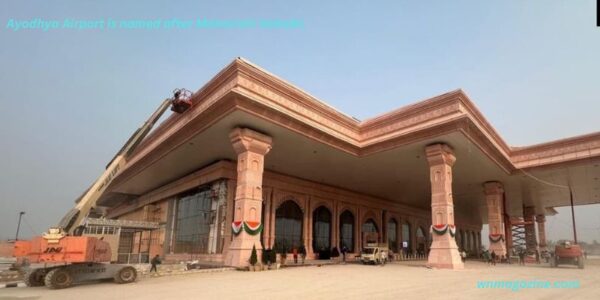Ayodhya Airport is named after Maharishi Valmiki.

Ayodhya Airport is named after Maharishi Valmiki.
The recently completed Ayodhya airport, set to be named Maharishi Valmiki International Airport, Ayodhyadham, is gearing up for its commercial inauguration. Government officials have confirmed that the airport in the sacred town will be named after the renowned epic writer Valmiki, who authored the “Ramayan.”
Also Read: wellhealth how to build muscle tag
Ahead of the consecration ceremony at the Ram Temple on January 22, Prime Minister Narendra Modi is scheduled to inaugurate the airport on December 30. Additionally, the government has decided to rename the train station as Ayodhya Dham, and the PM will also inaugurate the refurbished station during his day-long visit to the holy town, which is being prepared for the consecration event.
The new airport is set to commence operations on January 6, and following the consecration event, airlines will introduce flights connecting to major cities to accommodate the daily influx of visitors to the Ram Temple. Inaugural flights on the event day will be provided by IndiGo and Air India Express.
Both airlines have already confirmed flights to Ayodhya from Delhi, Mumbai, and Ahmedabad starting from January 2024. The initial phase of airport construction is estimated to cost Rs 1450 crore, featuring a 6500-square-meter terminal building capable of handling up to 600 passengers during peak hours and accommodating up to 10 lakh passengers annually. The second phase of expansion will include a new terminal building covering 50,000 square meters, with a capacity for 60 lakh people annually and 3,000 passengers during peak hours.
The interiors of the terminal building are adorned with regional artwork, including murals and paintings depicting Lord Ram’s life. The Ayodhya airport is designed with various eco-friendly elements such as an LED lighting system, insulated roofing, rainwater collection, fountain-filled landscaping, and a water treatment plant.
The historical context of Ayodhya includes the construction of Babri Masjid in 1528 by Mir Baqi, the commander of Mughal emperor Babur, and its destruction on December 6, 1992, by Hindu majoritarian groups associated with the Ram Janambhoomi movement. This event led to communal unrest and claimed over 2,000 lives. The disputed location of Babri Masjid as the birthplace of Lord Ram in Ayodhya, or Ram Janambhoomi, has been a subject of contention between religious authorities and Hindutva groups since 1885.
Next Read: Wellhealth Ayurvedic Health Tips
A legal battle ensued in 1950 when Gopal Visharad Sharma petitioned the Faizabad district court for permission to worship the Ram Lalla idols installed there in 1949. In 2010, the High Court divided the contested area among the Sunni Waqf Board, the Nirmohi Akhara, and Ram Lalla. In 2019, the Supreme Court ordered the Uttar Pradesh government to provide Muslims with five acres of land to construct a mosque, while granting the deity Ram Lalla the full 2.77 acres of the disputed ground.







